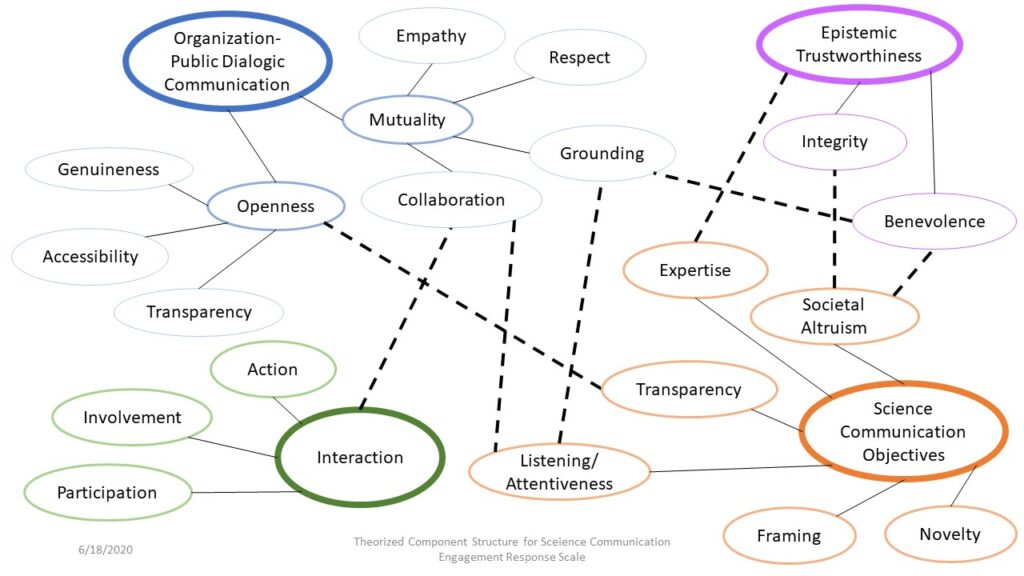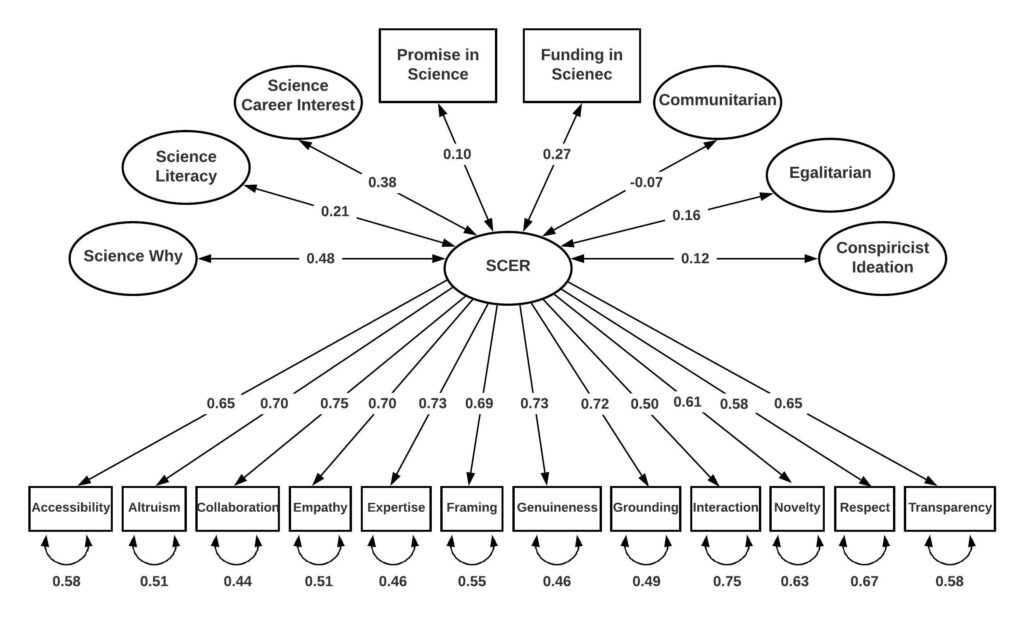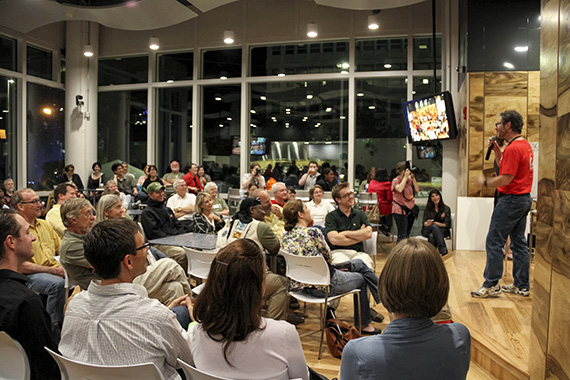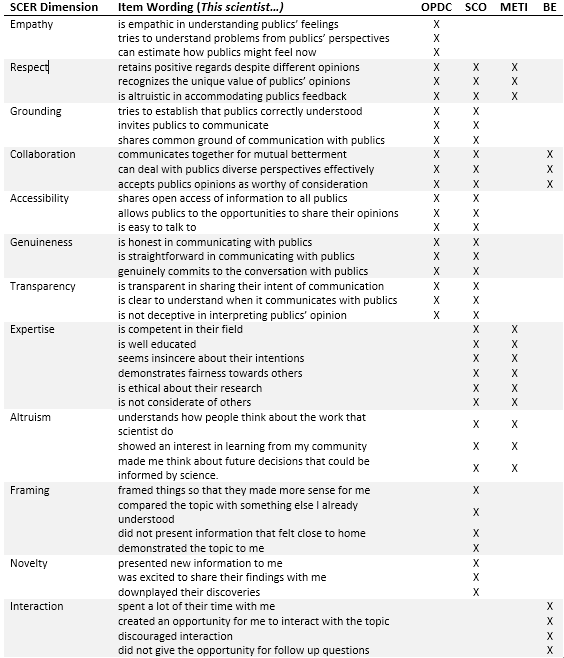This project was the focus of my dissertation at UT. It involved months of prior research to establish the argument for the study in the first place. Academic research has a bad habit of not trusting expertise without a pages of justifying your argument. The meat of the project lies within the interview, survey, and analysis stage. I had to work on all stages of this research on my own since it was presented at my doctoral defense in early 2021.
Scientists who are committed to communicating their research often have a difficult time measuring their successes and areas for improvement. One way they maintain positive impacts with their audience (through social media or in person events at museums) is through ideas of public engagement. This term is thrown around in different contexts, but experts from different fields agree that high quality public engagement centers around two-way dialogue with audiences, elements of interaction and participation, and trustworthiness. Additionally, scientists are always trying to communicate new research and frame science in a way that is exciting and resonates with people’s past experiences. This gets difficult for scientists to adequately measure. On top of their institutional obligations, there is little time or incentive for scientists to improve on problem areas in their engagement efforts. One way to ease the burden is to present their audiences with a small questionnaire to measure their response to key elements of engagement. This response scale would be a key deliverable for communication training centers and scientists.

Prior research was gathered to determine key areas of public engagement with science. From there an initial list of 41 items built from existing scales as well as newly created items was used as a starting point. In traditional scale development procedures, these items still need to be validated by subject-matter experts. To make sure what I said I was measuring was actually what I was measuring I conducted 13 unstructured interviews with science communication practitioners and researchers. The transcripts were analyzed from these interviews for emergent themes consistent with the areas represented by the 41 items. The items were then distributed to a national quota sample through Qualtrics along with other items that would be compared to the new scale. Exploratory Factor Analysis and Confirmatory Factor Analysis procedures were performed on survey results from 400 respondents.
The factor analysis produced a 12 item scale that adequately represented key areas of public engagement with science. One question from each area loaded onto the same factor. This created a simple, but effective tool for scientists to use after they gave a short demonstration at a museum, presented their research at science cafe’s, or finished a Reddit AMA. Results from the survey can help scientists know what areas to work on to improve their communication and what areas connected with audience members.

This was a huge project to work on solo. Whenever friends and family would ask me about the process of a PhD, I would compare the dissertation to a driving test for your drivers license. By that point you’ve passed your test on the rules of the road and even driven with an instructor or experienced driver to guide you. The driving test, like a dissertation, is your time to show your skills. I’m extremely proud of this project, and although I welcome collaboration on all future projects I’m glad I finished this one to prove to other researchers my expertise. At the time of writing the scale itself has never been implemented and the findings have not been formally published.

